Why is the melon pink inside and can you eat it
It sometimes happens that when you buy a melon, you find pink flesh at home. Can you eat it and what caused the change in natural color? Does the pink color affect the taste and does this not indicate harmful substances inside the fruit? We will understand the article.
The content of the article
Why is the melon pink inside
Often, as soon as they see a change in the pulp, people throw the melon away. And in vain, because usually this is a sign of quite harmless phenomena, therefore, this fruit should be examined closer. The main reasons for the color metamorphosis of the pulp are cross-pollination, peculiarities of the variety and the presence of nitrates.
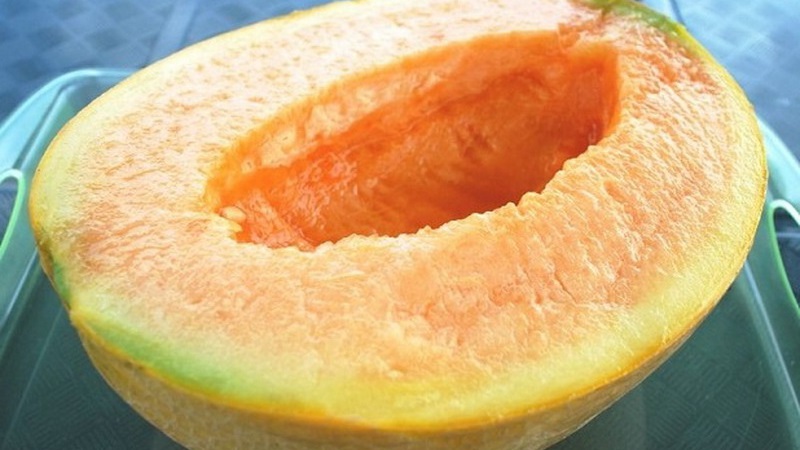
Pollination
This phenomenon is the transfer of pollen from some plants to others by wind or insects., due to which the over-pollinated bush acquires the characteristics of a different variety. Sometimes this leads to a change in the taste, color and shape of plants.
Melon is one of the most frequently re-pollinated plants, and therefore is capable of changing... It is almost impossible to avoid this, the only option is to manually pollinate the flowers, but many farmers do not engage in such a troublesome task, and therefore there are many melons with foreign characteristics on the market.
Pink flesh may indicate the proximity of a melon with watermelons or strawberries.... In any case, there will be no significant changes in taste from this, except for a slight aroma or, in extreme cases, aftertaste. If the melon no longer contains any suspicious signs, it can be eaten.
Other melon varieties:
Features of the variety
There are many melon hybrids with vegetables, fruits and even berries.... Some of them are the result of a long and painstaking selection of scientists; they are considered unique and rare.
Here are some varieties of pink-fleshed melons:
- Italian beauty... It has small, rounded fruits and a green-orange rind. Their weight does not exceed 500 g. The pulp is light pink, has a dense, oily consistency, sweet taste with honey notes.
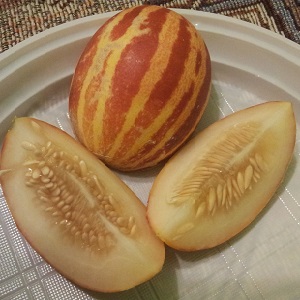 Strawberry... The weight of the fruits of this variety can reach 2 kg, their peel is smooth and thin, light in color. The shape resembles a strawberry. The flesh is salmon-colored, sweet and juicy, has a characteristic aroma, literally melts in your mouth.
Strawberry... The weight of the fruits of this variety can reach 2 kg, their peel is smooth and thin, light in color. The shape resembles a strawberry. The flesh is salmon-colored, sweet and juicy, has a characteristic aroma, literally melts in your mouth.- Strawberry giant... The fruits are large, weighing from 2 to 4 kg, the rind is smooth, rich orange, reminiscent of a peeled orange. The pulp is pink, oily, sweet, with a honey flavor. If you are lucky enough to buy such a melon, do not doubt its taste and quality, because the variety is considered unique and rare, many gardeners hunt for it.
- Pineapple (on the picture). The oblong fruits have a pinkish flesh with a delicate pineapple taste and a bright smell. The consistency is juicy, dense.
Nitrates and other substances
Often the melon is “fed” with nitrates and other chemical fertilizers for the sake of gaining mass and rapid ripening. A hallmark of the presence of nitrates —Colouring of a melon in some places to bright pink, especially alarming should be similar changes near the tail area.
But other signs indicate the presence of chemicals inside the fetus: rotten separate parts of it, lack of taste, or, conversely, too pronounced, "artificial" taste. Dull, gray or green fibers also indicate this.
If there is a cut melon on the counter - pay attention to the layer between the peel and the pulp: if it is yellow, then this is evidence of the use of nitrate, if green, nitrates.
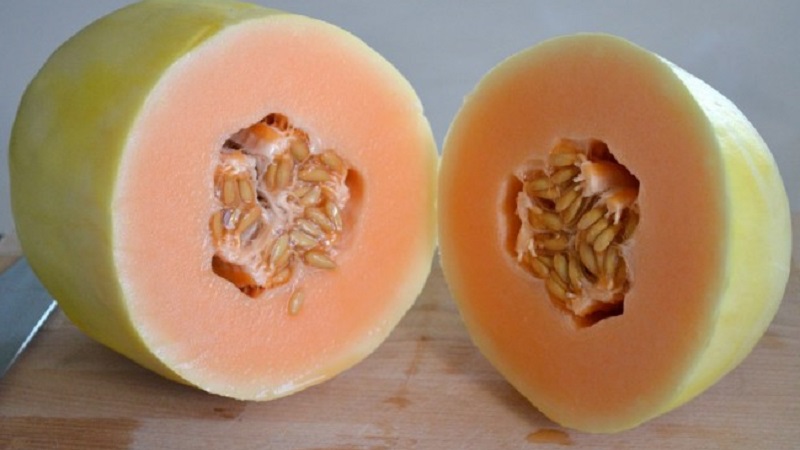
Is it possible to eat such a melon
If you don't notice any disturbing signs other than pink flesh, you can eat the fruit... Chances are, you come across a re-pollinated or hybrid melon.
Important! If the pulp is pink, it should be so in all places, if the color changes are noticeable only in fragments, this is a clear signal of its unsuitability for food.
If melon pulp of other colors
In addition to pink, in a cut melon you can expect orange and even transparent flesh.... Usually this is also the result of hybridization or cross-pollination.
Read also:
What is good about the Kassaba melon, how to choose and grow it
Orange
Typically, this pulp is found in hybrid fruits. An orange color indicates a high content of beta-carotene or provitamin A inside. This substance is responsible for the renewal of the body, its youth, for the resorption of atherosclerotic plaques inside the vessels. There are many varieties with this pulp color.:
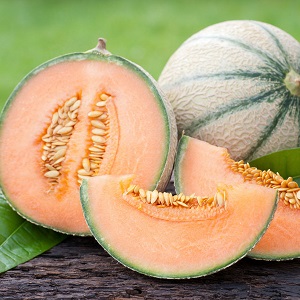 Cantaloupe or butternut melon (photo on the right). Rounded green fruits with firm pulp.
Cantaloupe or butternut melon (photo on the right). Rounded green fruits with firm pulp.- Charente... Yellow-gray peel with green longitudinal stripes, deep orange pulp.
- Iroquois... The rind is gray, firm and firm. A distinctive feature is a convex ornament along the entire crust.
- Orange... Hard, ornamented skin with longitudinal green stripes. The pulp is very sweet and has a characteristic aroma.
- Charlotte... Rounded fruit with a firm orange rind, sugar and tender flesh. A very juicy variety.
- Portent... These fruits have a rich melon aroma and firm pulp. The peel is gray-yellow, with a relief pattern.
It should be borne in mind that melons with orange flesh are very sweet and contraindicated for diabetics.
Transparent
This color indicates that the melon is crossed or cross-pollinated with apples, pears or cucumbers.... Such a fruit does not carry any health risks, but it is distinguished by high wateriness and juiciness, a peculiar taste.
Note. The melon should be solid. If transparency is observed only in some parts of the fruit, it is better to refuse it.
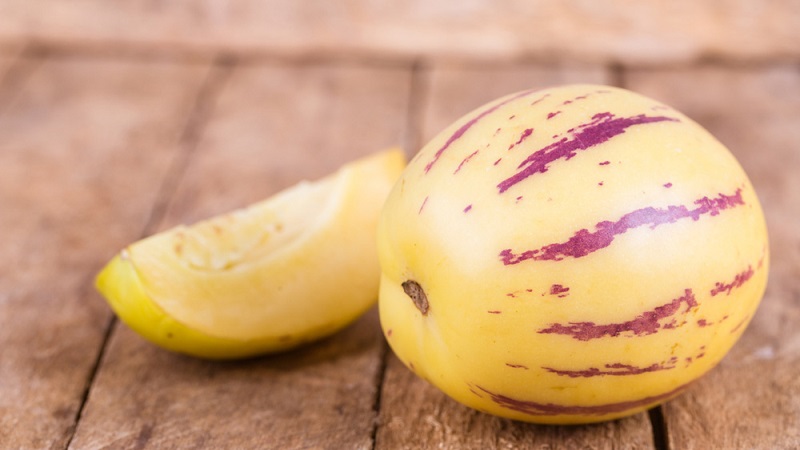
Melon varieties with transparent flesh:
- Amal... Elongated fruit shape, weight 3-4 kg. The pulp is transparent and aromatic.
- Torpedo... Specific vanilla aroma and sweet, sugary taste. The peel is sandy in color with yellow spots.
- Pepino (photo above). Sweet and sour taste and watery consistency. The rind is bright yellow in color.
Conclusion
The rules for choosing a high-quality and tasty melon are simple and have long been known. But, if observing them, you still come across a “fruit with a surprise”, we recommend not to throw it away, but to carefully examine it. It is possible that you just accidentally acquired a hybrid for yourself with an unusual taste and color.